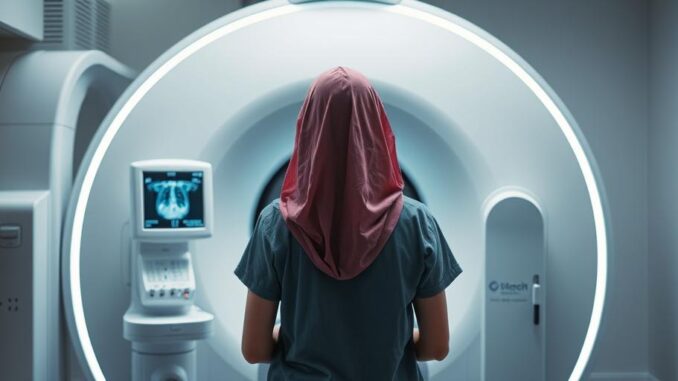
Summary
Onsite Mammography suffered a data breach affecting 357,265 individuals due to unauthorized access to an employee’s email account. The breach exposed personal and protected health information, including names, Social Security numbers, and medical data. Onsite Mammography is offering affected individuals free credit monitoring and identity theft protection services.
Dont let data threats slow you downTrueNAS offers enterprise-level protection.
** Main Story**
Okay, so Onsite Mammography out in Westfield, Massachusetts, you know, the medical imaging folks? They’ve announced a pretty significant data breach – we’re talking about a reported 357,265 individuals affected. It’s a hefty number, and definitely cause for concern in the industry.
The problem? Seems like someone gained unauthorized access to an employee’s email account back in October 2024. That’s where the sensitive personal and, critically, protected health information (PHI) was exposed, or so they say. Onsite Mammography claims there’s no proof of misuse, but honestly, that’s cold comfort. We all know how these things can snowball.
Diving Deeper: What Happened?
So, Onsite Mammography noticed some fishy activity on that employee’s email account in October of last year. Makes you wonder what those initial signs were. Anyway, they locked down the account pronto and called in the digital forensics cavalry for an investigation. Apparently, the unauthorized access was limited to a “brief window of time,” and it didn’t spread to other systems. At least, that’s what they’re saying.
To figure out the damage, they brought in a data analytics vendor. It took until February 21, 2025, for the vendor to finish their review. The news wasn’t great. Turns out patients’ health info was exposed, which is precisely what no-one wants to hear. I mean we are talking names, Social Security numbers, birthdates, drivers licences and credit cards. And the worst bit? Details relating to mental and physical health conditions were compromised. Not good at all.
Damage Control and Fallout
Here’s what Onsite Mammography’s doing. They’ve told the people affected, obviously, and they’re offering 12 months of free credit monitoring and identity theft protection through Equifax. Standard stuff, really. It includes credit monitoring, identity recovery help, and fraud alerts. Plus, they’re promising they’ve upped their security game to stop this from happening again. They’ve stated they have “no reason to believe any information has been or will be misused as a result of this incident”. I mean, what else are they going to say? Thing is, a bunch of law firms are sniffing around, exploring lawsuits on behalf of those affected. You can see it coming a mile away.
The Big Picture: Healthcare Under Attack
Look, this breach is just another example of why healthcare data is such a juicy target. And in truth email accounts, bulging with patient info, are easy targets for cybercriminals. Phishing attacks are rampant, and employees sometimes click on things they shouldn’t – we’ve all been there, haven’t we? The fallout? Identity theft, financial headaches, and a tarnished reputation.
What Can We Do?
Ultimately, healthcare providers must take cybersecurity seriously. We’re talking strong email security – multi-factor authentication is a must, not a nice-to-have. Regular security training for employees is crucial. And intrusion detection systems? Non-negotiable.
Patients, by the way, aren’t off the hook either. We’ve got to be wary of phishing emails. Credit reports need to be checked regularly. And any weird activity? Report it immediately. It’s a shared responsibility.
This whole Onsite Mammography mess is a wake-up call. It is a stark reminder that we must be super vigilant with protecting sensitive information. As of today, April 25, 2025, the investigations are ongoing. The whole situation is unfolding, and the full picture hasn’t yet been revealed. So, the big question is, are we doing enough to protect our data, and the data of those we serve?


The delay between the breach in October 2024 and the completion of the data analytics vendor’s review in February 2025 raises concerns. What are the typical timelines for these investigations, and what factors contribute to delays in identifying the scope of a breach?
That’s a great point! The timeline is definitely something to consider. Typical investigation times can vary widely depending on the complexity of the breach, the resources available, and any regulatory requirements. Factors contributing to delays often include data volume, forensic analysis needs, and vendor availability. This incident emphasizes the importance of efficient incident response planning.
Editor: StorageTech.News
Thank you to our Sponsor Esdebe
The mention of employee training is key. How frequently should organizations conduct cybersecurity awareness training to ensure employees remain vigilant against evolving phishing tactics and social engineering attempts?
That’s a fantastic question! The frequency of cybersecurity awareness training is crucial. While annual training is a starting point, more frequent, shorter sessions or ongoing reminders could be more effective in keeping cybersecurity top of mind and adapting to rapidly changing threats. What training methods have you found most impactful?
Editor: StorageTech.News
Thank you to our Sponsor Esdebe
“Limited window of time” – that’s what my internet provider always says when my connection drops mid-movie! Seriously though, with that much sensitive data exposed, “brief” is relative. I wonder if they used carrier pigeons to send the data; that might have slowed things down!
Haha, the carrier pigeon analogy is gold! You’re right, even a “brief window” can be an eternity when sensitive data is at risk. The volume of data is a factor, I guess. The number of records that can be copied these days, even in a “short window” is astounding.
Editor: StorageTech.News
Thank you to our Sponsor Esdebe